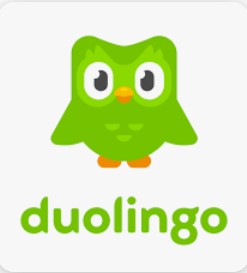Overview of 4th Digital Tool Busuu:
For this week’s blog post, the new digital learning tool I discovered is titled, busuu. This is a free-to-use software application that enables individuals to learn a new language. The above-mentioned software application accomplishes this goal as it revolves more so around the significance of communication and socialization skills, interactive lessons, as well as applied learning. For a more information regarding the busuu online digital learning tool, please do kindly take a look at the attached hyperlink.
Learning Spanish on Busuu:
Immediately when I logged onto busuu, I was greeted through its welcome home page. Thereafter, I selected the language I strived to learn, Spanish, as it is the targeted skill for this learning project. Next, I delved into busuu’s prep tests page where it invited me to true or false questions regarding basic terminology I was already aware of. Some of these terms can be found in previous blog posts that will be attached with a hyperlink here. At the end of my first few Spanish terminology drills, I received an award of 10 stars on my busuu account. This is quite beneficial as individuals learning on the above-mentioned software application will gain motivation. Thereafter, I engaged in a training section that consisted of filling in the blanks. Here, I mastered the previous greeting vocabulary terms as I did in last week’s blog post. This was quite useful for me because now I feel a bit more confident with correlation to basic greetings as opposed to last week. Next, I participated in the “elementary A2” learning module. This is the category in which I had the opportunity to learn how to pronounce beginner conversation terms.
Comparison Between Busuu and Duolingo:
When comparing duolingo with busuu, there are multiple setbacks. For example, duolingo does not offer a rewards system for users who strive to learn languages. As mentioned above, a rewards system is quite beneficial as it paves the way for motivation. Secondly, duolingo revolves more so around repetition. This is quite impactful because constant repetition can withdraw applied learning.
Questions:
Some of the questions I would like to ask to in order to open room for discussion consist of the following:
- Are there any other tools than learning a language through instructional videos, practical learning (e.g., examinations and timed quizzes)?
- Other than online digital learning tools, memorization, repetition, and constant practice, what are effective ways of learning and mastering a new language?
How to Navigate Through Busuu:
Mastering Spanish Greeting Terms on Busuu:
Applied Learning on Busuu:
References
Johansen, M. (n.d.). Busuu Review 2025 (Is This Language App Worth It?). Guide2Fluency. Retrieved June 7, 2025, from https://guide2fluency.com/languages/spanish/busuu-review/.

 For a portion of my learning project, I will be using
For a portion of my learning project, I will be using  Although
Although  Some of the websites I use consist of:
Some of the websites I use consist of:  As for my favorite software applications, I consider myself as an individual who loves social media. Therefore, I constantly binge watch videos on
As for my favorite software applications, I consider myself as an individual who loves social media. Therefore, I constantly binge watch videos on  I use several digital tools that help me manage my coursework and study schedule. With respect to daily studying, I keep a four to five hour alarm on. This is because I tend to put in a minimum of four to five hours for every individual course. Whether I am memorizing my flashcards, working on an assignment or project, this timer supports me in knowing when to stop and taking a break, as well as to transition into studying material for a different course. Because I also have other daily commitments including volunteering, working multiple part-time jobs, and being involved in student clubs, I create a schedule on
I use several digital tools that help me manage my coursework and study schedule. With respect to daily studying, I keep a four to five hour alarm on. This is because I tend to put in a minimum of four to five hours for every individual course. Whether I am memorizing my flashcards, working on an assignment or project, this timer supports me in knowing when to stop and taking a break, as well as to transition into studying material for a different course. Because I also have other daily commitments including volunteering, working multiple part-time jobs, and being involved in student clubs, I create a schedule on  In order to prevent distractions, I turn on the,
In order to prevent distractions, I turn on the,